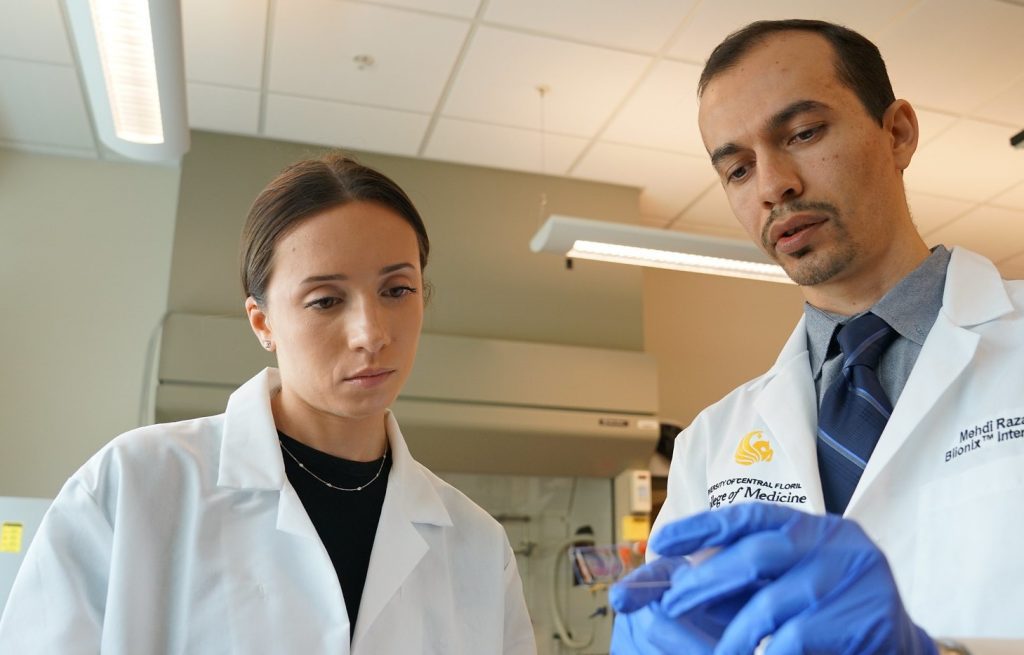- Burnett School Communique Research

When children break a bone, the traditional process of inserting metal implants, only to remove them once the bone is healed, can be difficult, stressful and even harmful to their still-growing bodies. UCF biomedical engineer Dr. Mehdi Razavi believes there is a better way to heal bone damage.
By using bioabsorbable magnesium composites, Dr. Razavi’s team is developing screws, pins, rods and other medical implants that dissolve within the body, eliminating the need to remove them.
“The traditional titanium bone implants work well and have been around for a long time, but you need a second procedure to remove them, which can bring psychological issues,” he said. Inserting strong implants, like titanium, also can actually inhibit bone growth, he said, because the body’s weight is transferred to the metal – not the bone – during recovery. “However, magnesium has mechanical properties very similar to bone, already exists in the body, and promotes bone formation, making it an ideal option,” he explained.
Nemours Children’s Health’s Dr. Zach Stinson, a pediatric orthopedic and sports medicine surgeon who had contributed to the research, agrees. He said biodegradable implants could take substantial stress and financial burdens off families, noting that one in three children breaks a bone at some point in childhood.
“Every time I have to fix a kid’s broken bone, the automatic question almost every time from the parent is, ‘Is that going to stay in forever?’ Psychologically, it’s a big deal,” he said. “If you have an implantable metal that is naturally absorbed and does not have to be removed during a second surgery, that has tremendous benefits in terms of eliminating the stress of additional surgeries on patients and containing healthcare costs.”
Dr. Razavi says his magnesium composite is also infused with nanoparticles that are absorbed into the tissue as the implant dissolves. The nanoparticles help regenerate new bone, making the healing process quicker.
“What we do is called regenerative medicine, where we build bioactive materials that can repair tissue.” he said. “My research is always focused on bringing together advancements in material science and medicine. This research is focused on bone tissue that has been lost due to bone fractures, tumor removal and osteoporosis.”
Magnesium, he said, is an ideal material for bone health and healing. It is as strong as metal, but more flexible than ceramics, and because it is a compound already found in the body, there are fewer chances for rejection. As the magnesium plates and screws dissolve over three to six months post-surgery, patients’ systems can safely filter the natural product out of the body. The team has successfully used the implants in rat models – the first step in getting the devices approved for testing in humans.
Second-year UCF medical student Alison Grise is part of Dr. Razavi’s team and considers her work an important opportunity to grow and be a part of something that could help patients for years.
“It is so exciting to be working on research that can eventually improve the way we treat patients, especially to be involved in the early stages. The fact that it is helping me build by surgical, clinical and research skills is also important to me,” she said.
The team is also looking at how the magnesium composite could be developed for applications beyond medicine and has received funding from the National Science Foundation to improve the material’s properties and create possible applications for the aerospace, automotive and sports industries.
Post Tags
- burnett school of biomedical sciences College of Medicine Research